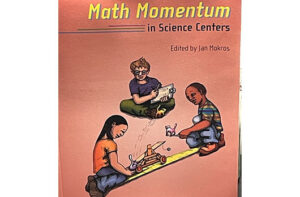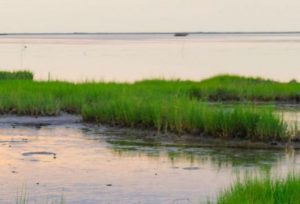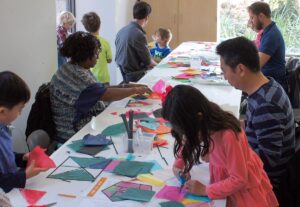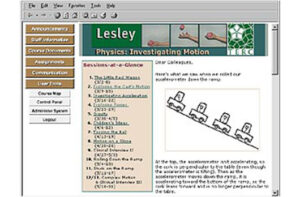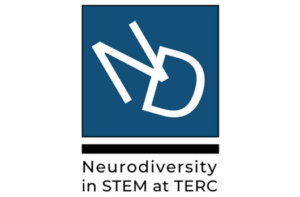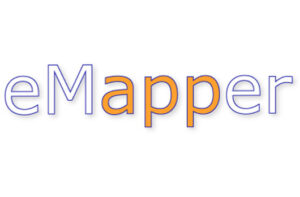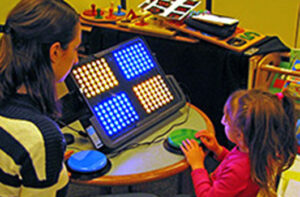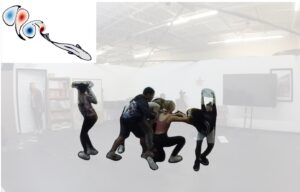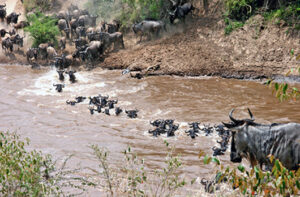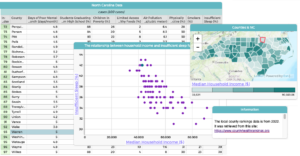iSWOOP
Lead Staff:
Martha MersonRelated People
- Nickolay Hristov, formerly of the Center for Design Innovation
- Louise Allen, Winston-Salem State University
SummaryiSWOOP advanced STEM learning among national park visitors by bringing together educators, scientists, and National Park Service (NPS) interpreters to incorporate site-based science into programs for the public. Project staff sought to build expertise within the interpreter and ranger community. iSWOOP staff engaged with the researchers on site, and hosted sessions to help the rangers interpret complex data, and then asked informed questions of the researchers.
When rangers came to a deeper understanding of the research, their interactions with visitors were transformed. Rangers learned how to guide visitors to answer their own or each other’s questions in order to build scientific literacy. iSWOOP enhanced interpreter-visitor interactions in four ways, by providing interpreters with:
- Direct contact with scientists doing research in the park in an interactive format.
- Field-based experiences, increasing their awareness of scientific park-based research.
- Compelling visual data and graphs which can function as a jumping off point for STEM learning.
- Ongoing opportunities to reflect on and then improve their interactions with visitors, increasing their strategies for leveraging visitors’ questions for active inquiry.
Research ActivityiSWOOP encompassed several lines of research including the impact of professional development on participating interpreters and the success of the model at parks of different sizes, staffing patterns, and visitor use. These studies were led by external evaluator Cynthia Char. In order to facilitate closer ties and information sharing between interpreters and scientists, the project staff members investigated scientific researchers’ preferences for outreach and education collaborations with park staff and interviewed rangers to better understand the format of research briefs that would be most helpful in advancing their work. Researchers Scott Pattison (of TERC, formerly of Institute for Learning Innovation) and Monae Verbeke (of Institute for Learning Innovation) investigated visitors’ interests as expressed in conversations with park staff.
ImpactProfessional development and research coordinated by iSWOOP project leaders increased engagement with park-based research at a number of national park units. When interpreters were up to speed on the cutting-edge science going on at their parks, they crafted opportunities for visitors to hear about such research. iSWOOP sparked new interests and fueled long-term interest among park visitors in scientists’ methods, careers in science, research with relevance for policy and managing protected lands, and increased the value of parks in the eyes of the public as national parks serve as vital outdoor laboratories for better understanding our natural world.
Videos
iSWOOP_videohall2 from iSWOOP on Vimeo.
PublicationsForist BE, Merson M, Allen LC and Hristov NI (2021) A Moving Dune, A Stunning View: Visitors’ Recollections of a Ranger-Led Hike at Indiana Dunes National Park. Front. Educ. 6:675672. 05 July 2021.
Caise Article: Finding a Way Forward: Diversity, Equity, and Inclusion at Indiana Dunes National Park
Related WorkGuides for implementing iSWOOP Contact martha_merson@terc.edu for more information.
If it Has to Last, NASP
Are you the one in any group or room who feels most responsible for expensive equipment? Are you at risk of being a nag when binoculars or microscopes are in use? Any place can be a hazard zone for equipment: sand in the desert, moisture in wetlands and swamps, grit in the city, fingerprints and grease in the lab. We’ve been to all of those places, and we’ve lived with fears of wrecked gear for years. Now we want to share our philosophy for keeping equipment and teams at their best: NASP.
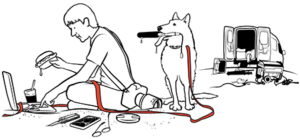
If this is your first time seeing the term, the first three letters stand for “Not A Scratch.” Our solution to saving time, expense, and sanity began as a Protocol, then became something of a Policy, ultimately maturing into a Philosophy. NASP was first issued as a warning to assistants and students: Equipment should be handled with utmost care. As anyone who has tried knows, raising funds for equipment is not so easy to do. Once in hand, managing the bureaucracy associated with purchasing and maintenance contracts is a major time drain. Yet, in a single expedition, equipment can get trashed quickly.
Ready to start your own NASP movement? Download the NASP poster and get your team or class on board!
- Nickolay Hristov, formerly of the Center for Design Innovation
- Louise Allen, Winston-Salem State University
iSWOOP advanced STEM learning among national park visitors by bringing together educators, scientists, and National Park Service (NPS) interpreters to incorporate site-based science into programs for the public. Project staff sought to build expertise within the interpreter and ranger community. iSWOOP staff engaged with the researchers on site, and hosted sessions to help the rangers interpret complex data, and then asked informed questions of the researchers.
When rangers came to a deeper understanding of the research, their interactions with visitors were transformed. Rangers learned how to guide visitors to answer their own or each other’s questions in order to build scientific literacy. iSWOOP enhanced interpreter-visitor interactions in four ways, by providing interpreters with:
- Direct contact with scientists doing research in the park in an interactive format.
- Field-based experiences, increasing their awareness of scientific park-based research.
- Compelling visual data and graphs which can function as a jumping off point for STEM learning.
- Ongoing opportunities to reflect on and then improve their interactions with visitors, increasing their strategies for leveraging visitors’ questions for active inquiry.
Research ActivityiSWOOP encompassed several lines of research including the impact of professional development on participating interpreters and the success of the model at parks of different sizes, staffing patterns, and visitor use. These studies were led by external evaluator Cynthia Char. In order to facilitate closer ties and information sharing between interpreters and scientists, the project staff members investigated scientific researchers’ preferences for outreach and education collaborations with park staff and interviewed rangers to better understand the format of research briefs that would be most helpful in advancing their work. Researchers Scott Pattison (of TERC, formerly of Institute for Learning Innovation) and Monae Verbeke (of Institute for Learning Innovation) investigated visitors’ interests as expressed in conversations with park staff.
ImpactProfessional development and research coordinated by iSWOOP project leaders increased engagement with park-based research at a number of national park units. When interpreters were up to speed on the cutting-edge science going on at their parks, they crafted opportunities for visitors to hear about such research. iSWOOP sparked new interests and fueled long-term interest among park visitors in scientists’ methods, careers in science, research with relevance for policy and managing protected lands, and increased the value of parks in the eyes of the public as national parks serve as vital outdoor laboratories for better understanding our natural world.
Videos
iSWOOP_videohall2 from iSWOOP on Vimeo.
PublicationsForist BE, Merson M, Allen LC and Hristov NI (2021) A Moving Dune, A Stunning View: Visitors’ Recollections of a Ranger-Led Hike at Indiana Dunes National Park. Front. Educ. 6:675672. 05 July 2021.
Caise Article: Finding a Way Forward: Diversity, Equity, and Inclusion at Indiana Dunes National Park
Related WorkGuides for implementing iSWOOP Contact martha_merson@terc.edu for more information.
If it Has to Last, NASP
Are you the one in any group or room who feels most responsible for expensive equipment? Are you at risk of being a nag when binoculars or microscopes are in use? Any place can be a hazard zone for equipment: sand in the desert, moisture in wetlands and swamps, grit in the city, fingerprints and grease in the lab. We’ve been to all of those places, and we’ve lived with fears of wrecked gear for years. Now we want to share our philosophy for keeping equipment and teams at their best: NASP.

If this is your first time seeing the term, the first three letters stand for “Not A Scratch.” Our solution to saving time, expense, and sanity began as a Protocol, then became something of a Policy, ultimately maturing into a Philosophy. NASP was first issued as a warning to assistants and students: Equipment should be handled with utmost care. As anyone who has tried knows, raising funds for equipment is not so easy to do. Once in hand, managing the bureaucracy associated with purchasing and maintenance contracts is a major time drain. Yet, in a single expedition, equipment can get trashed quickly.
Ready to start your own NASP movement? Download the NASP poster and get your team or class on board!
iSWOOP encompassed several lines of research including the impact of professional development on participating interpreters and the success of the model at parks of different sizes, staffing patterns, and visitor use. These studies were led by external evaluator Cynthia Char. In order to facilitate closer ties and information sharing between interpreters and scientists, the project staff members investigated scientific researchers’ preferences for outreach and education collaborations with park staff and interviewed rangers to better understand the format of research briefs that would be most helpful in advancing their work. Researchers Scott Pattison (of TERC, formerly of Institute for Learning Innovation) and Monae Verbeke (of Institute for Learning Innovation) investigated visitors’ interests as expressed in conversations with park staff.
Professional development and research coordinated by iSWOOP project leaders increased engagement with park-based research at a number of national park units. When interpreters were up to speed on the cutting-edge science going on at their parks, they crafted opportunities for visitors to hear about such research. iSWOOP sparked new interests and fueled long-term interest among park visitors in scientists’ methods, careers in science, research with relevance for policy and managing protected lands, and increased the value of parks in the eyes of the public as national parks serve as vital outdoor laboratories for better understanding our natural world.
Videos
iSWOOP_videohall2 from iSWOOP on Vimeo.
PublicationsForist BE, Merson M, Allen LC and Hristov NI (2021) A Moving Dune, A Stunning View: Visitors’ Recollections of a Ranger-Led Hike at Indiana Dunes National Park. Front. Educ. 6:675672. 05 July 2021.
Caise Article: Finding a Way Forward: Diversity, Equity, and Inclusion at Indiana Dunes National Park
Related WorkGuides for implementing iSWOOP Contact martha_merson@terc.edu for more information.
If it Has to Last, NASP
Are you the one in any group or room who feels most responsible for expensive equipment? Are you at risk of being a nag when binoculars or microscopes are in use? Any place can be a hazard zone for equipment: sand in the desert, moisture in wetlands and swamps, grit in the city, fingerprints and grease in the lab. We’ve been to all of those places, and we’ve lived with fears of wrecked gear for years. Now we want to share our philosophy for keeping equipment and teams at their best: NASP.

If this is your first time seeing the term, the first three letters stand for “Not A Scratch.” Our solution to saving time, expense, and sanity began as a Protocol, then became something of a Policy, ultimately maturing into a Philosophy. NASP was first issued as a warning to assistants and students: Equipment should be handled with utmost care. As anyone who has tried knows, raising funds for equipment is not so easy to do. Once in hand, managing the bureaucracy associated with purchasing and maintenance contracts is a major time drain. Yet, in a single expedition, equipment can get trashed quickly.
Ready to start your own NASP movement? Download the NASP poster and get your team or class on board!
iSWOOP_videohall2 from iSWOOP on Vimeo.
Forist BE, Merson M, Allen LC and Hristov NI (2021) A Moving Dune, A Stunning View: Visitors’ Recollections of a Ranger-Led Hike at Indiana Dunes National Park. Front. Educ. 6:675672. 05 July 2021.
Caise Article: Finding a Way Forward: Diversity, Equity, and Inclusion at Indiana Dunes National Park
Related WorkGuides for implementing iSWOOP Contact martha_merson@terc.edu for more information.
If it Has to Last, NASP
Are you the one in any group or room who feels most responsible for expensive equipment? Are you at risk of being a nag when binoculars or microscopes are in use? Any place can be a hazard zone for equipment: sand in the desert, moisture in wetlands and swamps, grit in the city, fingerprints and grease in the lab. We’ve been to all of those places, and we’ve lived with fears of wrecked gear for years. Now we want to share our philosophy for keeping equipment and teams at their best: NASP.

If this is your first time seeing the term, the first three letters stand for “Not A Scratch.” Our solution to saving time, expense, and sanity began as a Protocol, then became something of a Policy, ultimately maturing into a Philosophy. NASP was first issued as a warning to assistants and students: Equipment should be handled with utmost care. As anyone who has tried knows, raising funds for equipment is not so easy to do. Once in hand, managing the bureaucracy associated with purchasing and maintenance contracts is a major time drain. Yet, in a single expedition, equipment can get trashed quickly.
Ready to start your own NASP movement? Download the NASP poster and get your team or class on board!
Guides for implementing iSWOOP Contact martha_merson@terc.edu for more information.
If it Has to Last, NASP
Are you the one in any group or room who feels most responsible for expensive equipment? Are you at risk of being a nag when binoculars or microscopes are in use? Any place can be a hazard zone for equipment: sand in the desert, moisture in wetlands and swamps, grit in the city, fingerprints and grease in the lab. We’ve been to all of those places, and we’ve lived with fears of wrecked gear for years. Now we want to share our philosophy for keeping equipment and teams at their best: NASP.

If this is your first time seeing the term, the first three letters stand for “Not A Scratch.” Our solution to saving time, expense, and sanity began as a Protocol, then became something of a Policy, ultimately maturing into a Philosophy. NASP was first issued as a warning to assistants and students: Equipment should be handled with utmost care. As anyone who has tried knows, raising funds for equipment is not so easy to do. Once in hand, managing the bureaucracy associated with purchasing and maintenance contracts is a major time drain. Yet, in a single expedition, equipment can get trashed quickly.
Ready to start your own NASP movement? Download the NASP poster and get your team or class on board!
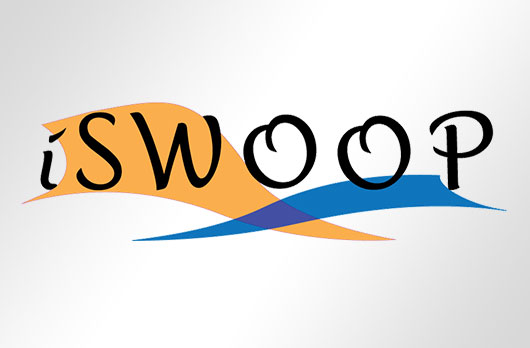
Funder:
National Science Foundation
Award Number:
DRL-1514776
Winston-Salem State University
Dates:2015–2021
Past ProjectThis project is no longer active. To see a list of current TERC projects, please click here.
Share This Page:


